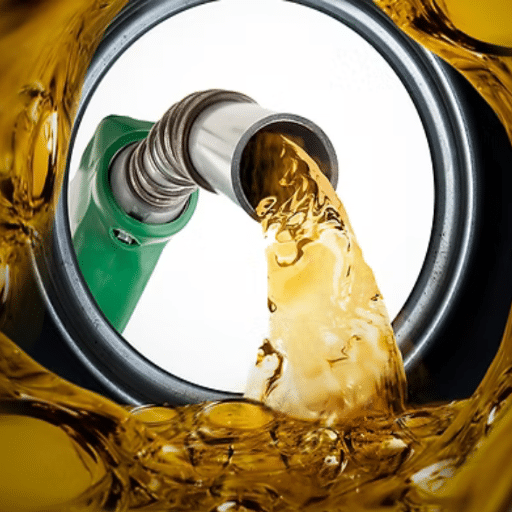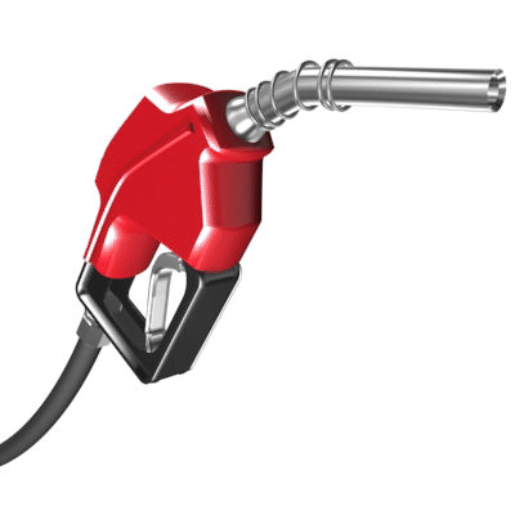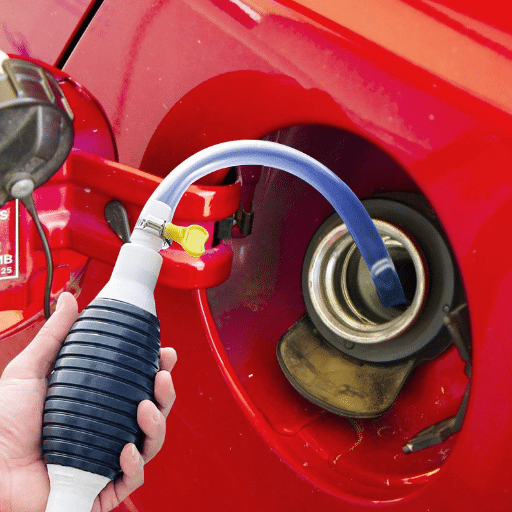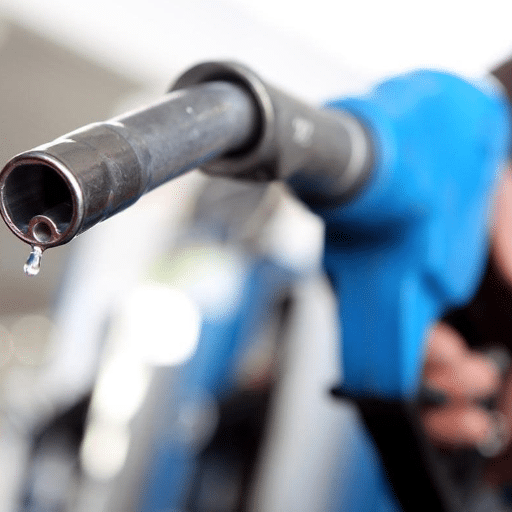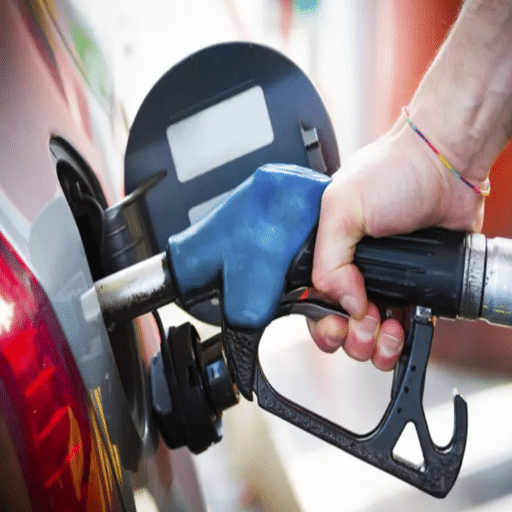Gasoline is a very important product for the modern world as it fuels the transportation system and, more or less, gives life to the economy. But maybe it has never occurred to you to ask how much the gas stations actually earn from the sale of gas? Though high fuel prices are often perceived as corresponding to huge profits, the truth is very intricate and, in a way, layered. The present article takes a close look at gas station profitability through the lens of the different factors that affect their profit margins and the operational challenges they have to face. With that, we will start from the oil prices, which can be very volatile, through competition that is cut-throat, and to complementary sources of income, which will all tell us why gasoline sales are frequently just a portion of the total gas station’s business model. If you fall into the category of a consumer wanting to know more or a business-minded person, then this analysis will definitely give you a better understanding of the hidden dynamics behind each gallon of fuel sold.
What is the Profit Margin on Gasoline?
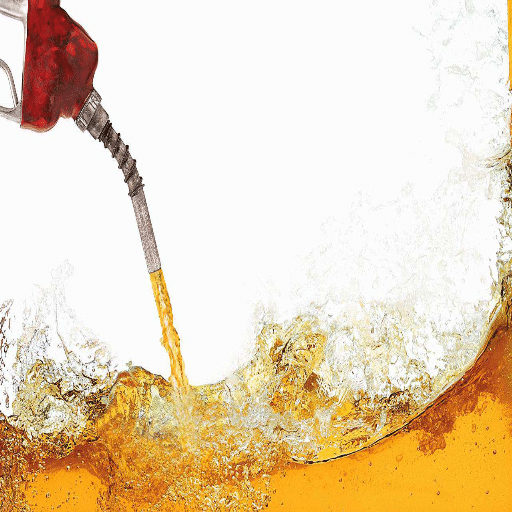
💰 Quick Answer: Gas Station Profit Per Gallon
The markup on gas is quite low, with retailers averaging just 5 to 10 cents per gallon in most cases. This amount includes various expenses that make up the total cost, from buying the fuel at the wholesale price to paying for its transport, credit card processing fees, and maintaining the store. Even though oil prices have a big effect on the stations’ income, they often rely on the sales from the convenience store and other services to get more profit than just selling fuel.
Definition of Profit Margin
Profit margin is a financial term that is used to measure a company’s profitability in relation to its revenue, expressed as a percentage. The method of calculating profit margin is by dividing net income by total revenue and multiplying by one hundred. For instance, if a company makes a total revenue of $1,000 with a net income of $100, then the profit margin will be 10%.
Generally, three types of profit margins are recognized for discussion purposes:
Gross Profit Margin
It denotes the portion of revenue left after direct costs like materials and labor have been deducted. It shows the company’s efficiency in producing goods or services. For example, sectors such as software and pharmaceuticals tend to have higher gross margins because direct costs are relatively low in comparison to sales.
Operating Profit Margin
It takes into account the operating expenses, which include rent, utilities, and salaries, along with direct costs. This metric illustrates the company’s overall operational efficiency and management of costs.
Net Profit Margin
The least restrictive metric is net profit margin, which includes all expenses like taxes, interest, and non-operational costs. It shows the overall profit-making ability of the organization.
📊 Industry Comparison
The latest industry data reveals that net profit margins differ by sector, with the retail sector being the lowest, that is, only 2% to 5%, while the high-tech and financial service industries have margins over 20%. Therefore, monitoring and optimization of profit margins are crucial steps for the long-term growth and good financial condition of the business.
Average Gasoline Profit Margins
Various factors like crude oil prices, refining costs, distribution and marketing expenses, and taxes affect the profit margin on gasoline. In general, the gross margin for gasoline retailers in the United States is usually about 10 to 15 cents per gallon. However, this gross margin is merely the difference between the wholesale price and the retail price and does not include the operational costs such as employee wages, rent, and utility expenses.
| Margin Type | Amount Per Gallon | Description |
|---|---|---|
| Gross Margin | 10-15 cents | Difference between wholesale and retail price (before operating expenses) |
| Net Profit Margin | ~2 cents | After all operating expenses are deducted |
When all operating expenses are taken into account, gas stations have a net profit margin that is much smaller, often averaging 2 cents per gallon. Crude oil price swings and local regulations, including state and federal tax policies, are among the factors recently identified as significant contributors to the variability of these margins. For instance, in higher state fuel tax or stricter environmental areas, profit margins are likely to face even more pressure.
However, it is not uncommon for gas station operators to maintain their overall business profitability through the use of ancillary products such as convenience store sales, with the latter being usually higher in profit margin. Those additional revenue streams are vital for covering the extremely low profits from fuel sales. The variations in gasoline profit margins reveal the intricacies of this industry, where factors like global oil markets and consumer demand have a direct influence on financial performance.
Factors Influencing Profit Margins on Gasoline
🛢️ Crude Oil Prices
The launch of crude oil prices has been regarded as the leading factor in the determination of the prices of gasoline because it is the biggest element of the overall price. Changes in the crude oil markets across the globe that occur due to geopolitical tensions, bottlenecks in the supply chain, and the decisions made by production entities like OPEC; all these factors are intertwined with the margins of gasoline. To some extent, the uncertainty about the prices lifts the veil of obscurity from the suppliers and retailers.
🏭 Refining and Distribution Costs
The process of refining crude oil into gasoline is not cheap; it incurs a heavy cost starting from energy to technology. The cost of distribution, which involves delivering the fuel to the stations, adds to the expense already incurred in the process of refining. Distribution and cost logistics play a major role in the shaping of the profitability at the gas station level because they are directly influenced by the efficiency of logistics, energy prices, and regional demand.
📋 Government Policies and Taxes
Taxes, environmental rules, and subsidies affect the price of gasoline tremendously. For instance, the state and federal taxes imposed on every gallon of gas differ significantly from each other, thus affecting the final retail prices and the profits a retailer can make. Regulations directed at lower emissions may also contribute to a rise in production costs, thus squeezing the margins.
🏪 Local Market Competition
Another factor that dictates the profitability of retailers is the competition level in the respective area of jurisdiction. Stations located in areas where competitors are limited may have a higher margin per gallon, while those in areas with a lot of competition will have to keep their prices low; hence, their profits will be compressed. However, one way to challenge the competition is to lease space for the sale of high-margin goods next to the gasoline station.
📈 Consumer Behavior and Demand Seasonality
Changes in gasoline consumption are often caused by the seasonal demand changes; for instance, summer travel leads to increased consumption, while winter driving leads to reduced consumption. Moreover, the consumers’ behavior, for example, choosing fuel-efficient vehicles or using alternative energy sources, also significantly impacts the purchasing patterns, thus affecting retail sales performance.
Knowing these factors and how they interact is crucial for the effective management of gasoline profit margins in a highly dynamic sector.
Understanding Gas Station Profit Margins
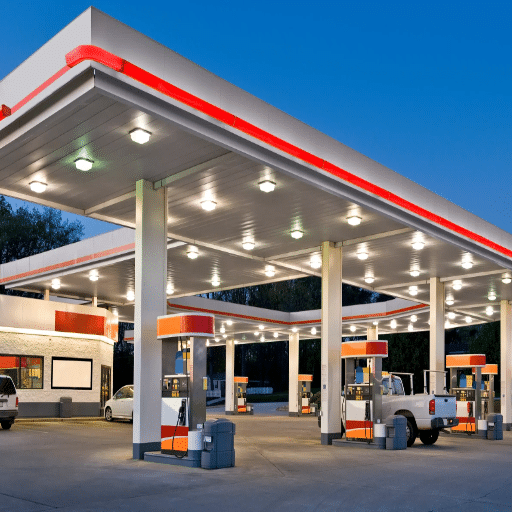
The cost of gasoline at the pump and the wholesale price paid by the gas stations are the main factors in the gas station profit margins. Nevertheless, the sale of gasoline gave the stations only a small profit because of the reasons of oil price variations, taxes, credit card fees, and competition. The majority of the gas stations depend on the income from non-fuel sales such as convenience store items, car washes, and maintenance services, which usually have higher profit margins. Properly managing operations and creating various sources of income are very important for the survival of the profitable sector of the industry.
Typical Profit Margins for Gas Stations
The profit margins on fuel sales for gas stations are incredibly small, considering that they average only 1.4% to 3% per gallon, which is meager compared to the operational expenses that include not just wholesale costs, but also transportation, credit card fees, and general operating costs. The low margin results from intense competition in the market and price volatility influenced by crude oil prices. The different non-fuel business segments contribute a lot to the overall prosperity, where the convenience store items, food sales, and car wash can yield up to 30%-50% margins. In order to survive, most petrol stations are thinking of ways to sell more fuel by focusing on these second revenue streams and applying cost-control measures to their fuel sales operations. The thin line between pricing competitively and being profitable is an important factor in this industry.
Comparative Analysis of Gas Station Profitability
Gas station profitability differs a lot depending on the location, the market, and the revenue diversification strategies. Industry data shows that the profit margin on fuel sales is very low, with 1%-3% per gallon being the average after operational costs such as credit card fees, transportation, and maintenance have been deducted. Therefore, non-fuel sources account for a large part of the gas station’s income and are thus very important for sustaining the station’s profitability.
| Revenue Source | Profit Margin Range | Importance |
|---|---|---|
| Fuel Sales | 1%-3% | Primary revenue driver but lowest margins |
| Convenience Store Items | 30%-50% | Coffee, snacks, cold drinks – major profit contributor |
| Car Washes | 30%-50% | High-margin supplementary service |
| Other Services | 25%-45% | Air pumps, lottery tickets, etc. |
Most gas stations have convenience stores as part of their operations, and the latter are also the biggest income sources. Coffee, snacks, and cold drinks yield margins of 30%-50% or more. Car washes, air pumps, and lottery ticket sales, among other ways of making money, help make the gas station more profitable and form a significant part of the overall income. Placing stations in high-traffic areas or near highway exits creates another advantage for them, as customer convenience matters greatly in the amount of sales that are made.
Apart from that, the use of competitive fuel pricing can bring in more customers to the station, which can lead to more sales of high-margin supporting products. Gas stations also use loyalty programs, dynamic pricing models, and operational niceties, such as energy management systems, to ensure profits are consistently high. Ultimately, diversification, operational efficiency, and customer-driven strategies are the key pillars of sustainable profitability in this tough industry landscape.
Impact of Location on Gas Station Profit Margins
Gas stations’ profitability is largely dependent on their geographical positioning, and the most significant benefits come from the areas where there is heavy traffic, like urban centers, highway junctions, and places near train stations or bus stops. The places with high traffic will let the customers see the gas stations and also bring them in, which in turn will have a positive impact directly on the sales of fuel and non-fuel products. Nonetheless, high traffic volume brings along high costs, such as expensive real estate and local taxes, and these can cut down on the profit margins.
Another factor that influences profitability is the type of customers in the area. For example, a gas station in an affluent neighborhood will have higher sales of premium fuel and related products than one in a poor neighborhood where the price factor will be a challenge. Moreover, the level of competition in the area is another factor—stations with very few rivals enjoy higher margins, while those that are in crowded markets may have to sell at lower prices to attract customers, thus lowering their profitability.
The access to the gas station, which includes factors such as good signage, several entry and exit points, as well as ample parking, directly correlates with the consumers’ convenience and the sales potential. Moreover, such regional trends as the local population growth or changes in the transportation infrastructure can either add to or subtract from a station’s economic potential over the years. A good evaluation of these factors will enable gas stations to pick the right location for themselves and thus achieve the best financial performance in the long run.
Gas Station Profitability: An In-Depth Look
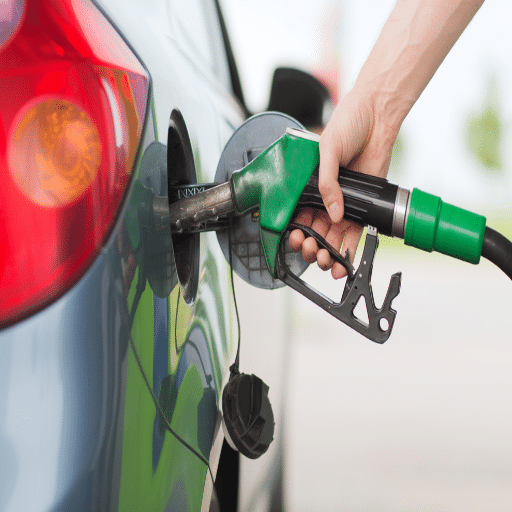
Gas station owners must concentrate on several crucial aspects to maximize their profits. First of all, fuel sales are still the main source of income, albeit profit margins on gasoline are usually very low. High-margin products like convenience store items, car washes, and fresh food offerings should be used as the main ways to support these margins. Location still matters the most; being close to busy streets and easy to get to will definitely increase the number of customers significantly.
Another factor that is very important is operational efficiency. Having a good pricing strategy, managing inventory effectively, and having equipment that works perfectly all result in lower costs and higher profits. Lastly, customer loyalty programs and the quality of service keeping customers satisfied can prompt them to come back, thus providing the company with a steady revenue stream. By carefully coordinating these factors, gas stations can boost their financial results and grow sustainably.
Revenue Streams for Gas Stations
Gas stations earn their money from the combination of the main and the secondary revenue streams. The main revenue source is fuel sales, which has been the major contributor to the gas station’s income. On the other hand, the gas station usually has very low profit margins on fuel, so they rely more and more on secondary streams such as convenience store sales. These stores often sell high-margin items such as snacks, drinks, and essential household goods, which adds to the overall profitability of the station.
Moreover, many gas stations turn to supplementary services to reap maximum profit, such as car washing, air pumping, and providing vehicle repair or maintenance services. Others even have income from partnerships like running the fast-food outlets of certain brands alongside them, or making available loyalty programs that entice customers to come back. Having multiple revenue streams is a way of lessening the impact of the fuel price volatility and, at the same time, ensuring the gas station’s operation remains stable in the long run.
Impact of Gasoline Prices on Profit Margins
The ups and downs in gasoline prices have a direct effect on the profits of gas stations, mainly because of the very small markup on fuel sales. Gasoline retail prices are set by retail costs, taxes, and demand, among other things, while the gas stations’ profit per gallon is often very low after these factors are considered. So, in times of high gasoline prices, it can happen that gas stations will not sell much fuel, as buying habits will change and people will be more inclined to use the cheapest or safest ways of getting around, like carpooling or public transport. On the other hand, when prices are down, people may lighten up, and the gas station’s profit margins based on volume will be slightly better. Still, it is worth mentioning that gas stations usually have a significant reliance on non-fuel revenue sources, such as convenience store sales and other services, which serve to absorb the fluctuations of earnings that are dependent on fuel. These supplementary services usually offer larger margins and serve as a financial anchor during shifting market conditions. Profit forecasting is made even more complicated by regulatory changes, supply chain problems, and crude oil price fluctuations, thus the a need for strategic planning and diversification.
Operational Costs and Their Effect on Profitability
The term “operational costs” refers to a huge variety of expenditures, such as labor, maintenance, utilities, and inventory, which all have a direct impact on the profit a company is making. An increase in labor costs caused by wage hikes or new laws can diminish the already low margins unless there are corresponding improvements in productivity or customer price adjustments. The same goes for utility costs that are often linked to energy market prices and can suddenly increase the total operating expenses unpredictably. Delaying maintenance may lessen the amount of money one spends in the short run, but it is going to make the total repair costs and downtime longer in the end. Inventory control is another important factor; having too much stock leads to extra storage costs and spoiled goods, while having too little stock may cause loss of sales and unhappy customers. Among the modern business practices that companies cannot miss, there are effective cost control measures like automating processes, optimizing supply chains, and data analysis for accurate forecasting, which are very crucial for maintaining profitability under the increasing pressures of modern business environments.
Analyzing Retail Gasoline Prices
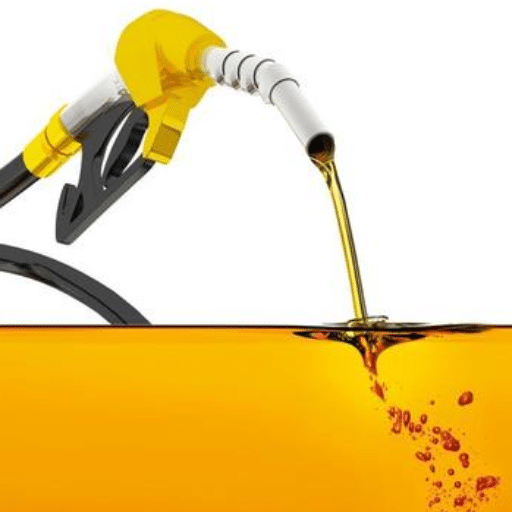
Crude oil costs have the most substantial impact on retail gasoline prices at the pumps, thus usually being the main factor in the price composition. All the other factors, which are of less importance, are refining costs, distribution and marketing expenses, and taxes that different governments at the federal, state, and local levels impose. Discrepancies in the crude oil prices are caused by the forces of global supply and demand, the price wars between the different oil-producing countries, and major world events. Refining costs are influenced by seasonal demand, regulations that require certain fuel formulations, and maintenance activities at the refineries. Moreover, transportation and marketing costs include the logistics of getting the gas to the retail outlets. Taxes, which vary by region, are one more reason for the price differences in gasoline between places. Grasping these factors is very important for making accurate predictions about the trends and differences in gasoline prices in the various locations.
Components of Retail Gasoline Pricing
Retail gasoline prices are set based on a variety of factors that include crude oil prices, costs of refining, and the expenses of distribution and marketing, as well as taxes. The cost of crude oil, which is the principal raw material for gasoline, significantly affects the price, and its variations are determined by the global demand-supply situation, political issues, among others, and OPEC’s production decisions. The refineries’ costs, which are the processing of the crude oil into gasoline, are subject to the variations of the seasons and the regulations for the particular fuel grades. The costs of distribution and marketing involve the transportation of the fuel from the refineries to the retail outlets and the expenses incurred in running the gas stations, respectively. Taxes, which comprise federal and local taxes, vary greatly from one location to another, thus adding to the price differences in different areas. The interaction of all these factors reflects the sophistication of the pricing system for gasoline and, at the same time, explains the differences in the prices across regions and historical periods.
How Pricing Affects Consumer Behavior
Pricing is a key factor in influencing consumer behavior, acting as an economic indicator and a psychological element in purchasing decisions at the same time. Higher gasoline prices lead to consumers changing their driving habits to cut costs, e.g., carpooling, public transport, and combining trips. Hefty prices for a long time may even drive consumers permanently to fuel-efficient cars or alternative energy options, as they are used to changing behavior long-term. On the other hand, low prices will usually result in more consumption and less concern about fuel efficiency. Moreover, price elasticity varies by socioeconomic status, with higher-income households being less likely to change their behavior noticeably than lower-income ones, who are more reactive to price changes. Moreover, the regional pricing differences, which are due to taxes and logistics, can make these behavioral patterns stronger, as consumers consider cost efficiency and convenience when choosing their fuel-related options.
Regional Variations in Gasoline Prices
Gasoline prices around the country differ a lot from one place to another due mainly to local taxes, distance to refineries, the cost of transporting the product, and different state environmental regulations. Fuel prices in California, which have a very high state tax on fuel, are usually very high and contrast with those in Texas, which has a low tax. Logistical factors also contribute to the price variations; transport costs are usually high in remote areas, which are located away from refineries or major supply hubs, and these costs are borne by the consumers. The regulations on the environment usually don’t help the situation either, as they require the use of certain fuels that are more expensive to produce, thus contributing to the regional price differences. These price variations at times lead to marked alterations in consumer behavior and fuel demand within the regions.
Detailed Breakdown of Profit Margins Per Gallon
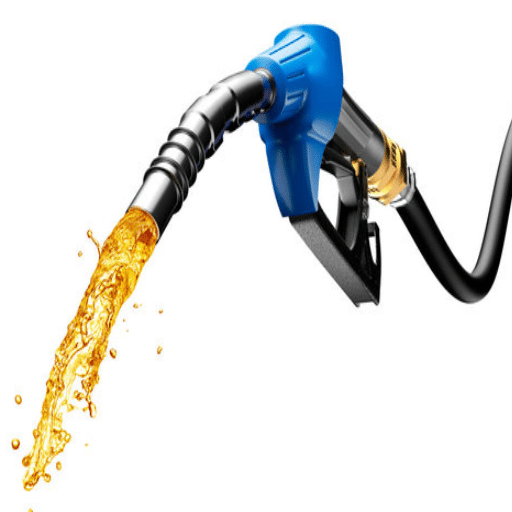
Profit margins per gallon in the gasoline industry can vary greatly depending on various factors such as the place, the market situation, and the cost of production. Typically, retailers get around $0.05 to $0.15 per gallon after deducting the cost of labor, utilities, and lease. However, it is important to point out that these margins are only a tiny part of the total price paid at the pump since most of the costs come from crude oil prices, refining, distribution, and taxes. Thus, it is quite common for retailers to depend on other services, like convenience store sales, to increase their profit.
Cost Components Affecting Profit Margin Per Gallon
In the case of the profit margin per gallon, I take into consideration the various significant cost components that have a direct impact on it. Crude oil price is the biggest contributor to this since it accounts for a major part of the cost. Refining costs, on the other hand, also add up, and to prove this, it is important to note that turning crude into different types of fuels involves difficult procedures and heavy power consumption. Then comes distribution and marketing, which together with taxes account for about half of the total costs. The taxes imposed at both the federal and state levels leave only the thinnest margin for retailers. Eventually, the same kind of operating costs that took labor, electricity, and rent at the retail location into account must be deducted, leaving just a tiny bit of margin per gallon sold.
Retail Pricing Strategies for Gasoline
The pricing strategies of gasoline in retail are influenced quite significantly by the dynamics of the market, relationships with suppliers, and the trends in consumer demand. Retailers have to come up with a plan that consists of various tools and actions, such as changing the price instantly depending on the costs of wholesale, competition in the region, and transporting the product to the location. The reason for this is that the market is composed of different factors, and to be competitive, it is essential to take them all into consideration. Some retailers are even using advanced pricing models where the prices are adjusted several times in a single day, this is on the basis of the changes in the price of crude oil and also the output from regional refineries.
Moreover, associating the sale of gasoline with the use of loyalty cards or giving discounts in affiliated convenience stores as a part of promotion is considered by retailers to be a strong reason for customers to come back. Retailers keep track of their customers’ behaviors and buying patterns, applying advanced analytics to figure out the right price to charge, which would yield the maximum profit for them. With the help of AI-powered pricing methods and automated stock management systems, the merger of cutting-edge technology makes it possible to have more accurate pricing, thus allowing one to ride the wave of market fluctuations and still be efficient in operations. All these measures, when taken together, empower gas stations to compete in an arena where profits are measured in cents, and the picture is not different when it comes to the gasoline market.
Seasonal Variations in Gasoline Profit Margins
The shifts in gasoline profit margins that happen every season are mainly caused by changes in supply and demand, regulatory changes, and environmental factors. The summer season normally has an increased use of gas due to the vacations and other travel activities, thus, the high prices and possibly wider profit margins. The summer months also correspond to the switch from winter gas to summer gas, which is more expensive to produce because of the strictly enforced environmental regulations designed to minimize smog and pollution. On the other hand, the colder months usually mean lower gasoline demand and thus, the travel volumes are down, and the producers are back to making cheaper winter-blend gasoline, which gives tighter margins.
| Season | Demand Pattern | Blend Type | Profit Margin Trend |
|---|---|---|---|
| Summer | High (vacations, travel) | Summer-blend (more expensive) | Wider margins |
| Winter | Lower (reduced travel) | Winter-blend (cheaper to produce) | Tighter margins |
Moreover, such things as the weather being too cold or too hot or the oil supply getting limited, can make the seasonal effects worse. Hurricanes are one example of events that can cause damage to the oil infrastructure, such as refineries and pipelines, thus creating a shortage in supply and further affecting prices. The seasonal trends in gas demand and prices indicate that gas stations would need to have flexible plans for their operations and be able to use real-time data from the market to ensure that their profitability is optimized throughout the year.
🎯 Key Takeaway
Gas station profitability is a complex equation that extends far beyond fuel sales alone. With razor-thin margins on gasoline (typically 1-3% per gallon), successful stations rely heavily on diversified revenue streams—particularly convenience store items with margins of 30-50%. Location, operational efficiency, competitive pricing strategies, and adaptation to seasonal variations all play crucial roles in maintaining sustainable profitability in this challenging industry.
Reference Sources
“Liquidity and Profitability Ratios on Growth of Profits of Listed Oil and Gas Firms in Nigeria”
“Determinants of Construction Sector Profitability in Croatia”
Frequently Asked Questions (FAQs)
What is the profit margin on gasoline at a gas station?
Gas stations usually get their profit margin on gasoline, which varies but generally lies between 10 and 20 cents per gallon. This margin is, however, quite dynamic, meaning it could go up or down depending on the wholesale prices of gasoline, gas stations’ operating costs, and the competition among fuel sellers in the area.
How do oil companies calculate gasoline margins?
Oil companies determine gasoline margins by measuring the difference between the wholesale price of gasoline and the retail price. This measurement takes into account a variety of costs, like refining costs, transportation fees, and federal excise taxes, all of which can contribute to the overall profit or loss situation of gasoline sales.
What affects gas prices and profit margins?
Gas prices and profit margins are impacted by a myriad of factors, such as the global oil price trend, costs incurred in refining, and market demand, which normally determines national average prices. Besides, external factors like political instability and compliance with environmental regulations may also contingently impact fuel costs and thus profit margin.
How do gas stations remain profitable?
Gasoline remains profitable by carefully controlling its gasoline margins and inventively providing other services like selling convenience store goods and washing cars. Stations can then recuperate the loss of profits from fuel sales by turning their profits from the additional services.
What is the average retail price of gasoline?
The average retail price of gasoline differs quite a lot depending on the location in the U. S. it is shaped by the interplay of wholesale and retail prices, local competition, and seasonal demand variations. Consumers who keep track of the monthly average will get a better understanding of the current market trends.
How do price increases affect gasoline profitability?
Price increases can bring about a favorable result in gasoline profitability if done in the right way. When fuel sellers raise the price of gas to the extent of escalating wholesale costs, it can help maintain or even improve profit margins, as long as the prices do not exceed the prevailing market rates.
What is the role of the EIA in analyzing gasoline profit margins?
The Energy Information Administration plays an important part in the assessment of gasoline profit margins by supplying the slaughterhouse data regarding fuel costs, profitability, and the average gas price. Thus, the information is very helpful for stakeholders like integrated oil companies and jobbers who want to analyze the market and make the right pricing decisions.
Do environmental compliance costs affect gasoline margins?
Definitely, in a big way, environmental compliance costs bog down gas margins. Refineries have to comply with many regulations to operate legally, which usually leads to higher operational costs. These costs are typically passed on to consumers in the form of higher prices at the pump, thereby affecting both the profit margins for retailers and the overall cost of gasoline for consumers.

